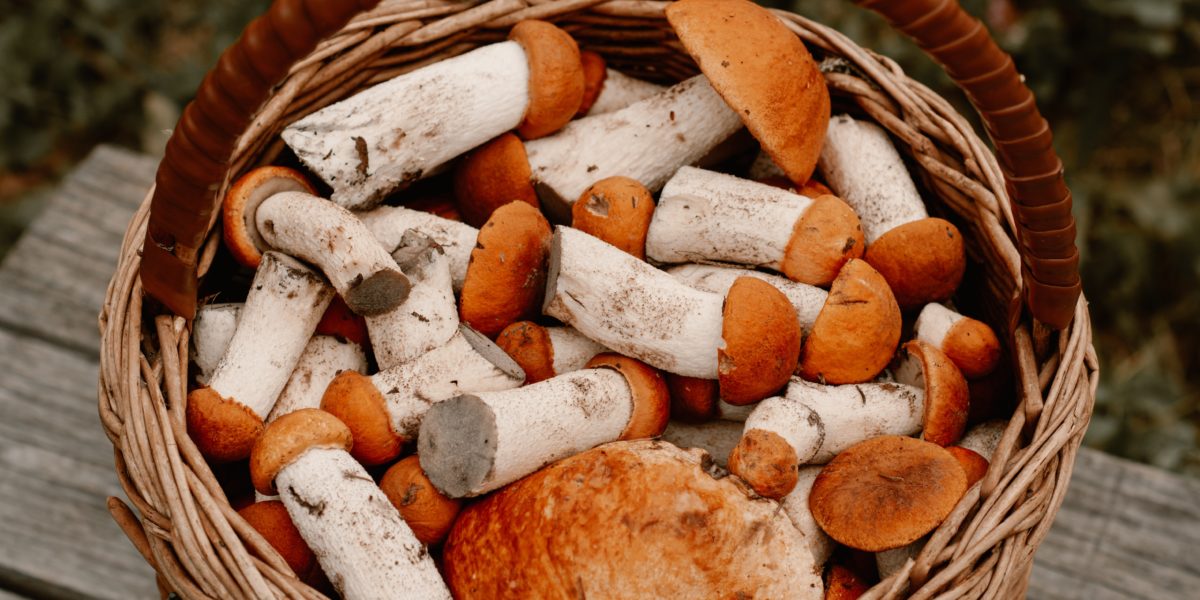
How to Grow Mushrooms
Tips for growing your own Wine Cap Stropharia mushrooms

Choice edible mushrooms may seem like an unusual, and perhaps daunting, addition to the garden. But growing the robust and handsome Wine Cap Stropharia (Stropharia rugoso-annulata) doesn’t require any special equipment or esoteric knowledge. The plant prefers damp shady areas, and can thrive among and benefit tall vegetables like corn and tomatoes by releasing nutrients from organic matter and controlling soil-borne garden pests called nematodes. The hardest part is deciding how to utilize the immense harvests!
Supplies
- 60 gallons (about a quarter yard) of fresh and clean (relatively free of debris) hardwood chips such as maple, oak, alder, fruitwood, et cetera
- A five-pound block of Stropharia rugoso-annulata “spawn,” available by mail order from commercial suppliers
- Optional: Bail of straw to protect from harsh winter weather and help keep moisture in
Where to Plant
Fungi prefer full to part shade and protection from drying winds. When established among tall plants, the fungus will benefit from the shade provided, while the plants will benefit from the decomposing organic matter. Do not plant under cedar, redwood, or other aromatic softwoods, since these produce anti-fungal compounds. Five pounds of spawn can inoculate up to thirty-two square feet, so be sure to have the appropriate amount of available space.
When to Establish
While Stropharia rugoso-annulata can be started anytime up to a month before frost, sowing occurs from late winter through early spring (in the lowland Pacific Northwest and coastal California) and will require less watering to establish.Creating a Mushroom Patch
Simply remove organic debris from the soil surface. Alternatively, dig a shallow (three- to four-inch) trench to help protect the fungus from cold weather and drying winds. Spread a two-inch layer of wood chips and water over the soil until thoroughly damp. Break the spawn up into small pieces and broadcast evenly over the chips. Spread another two-inch layer of chips on top. Water again until the chips are thoroughly moistened. Stir and toss the chips and spawn together, and water again.If establishing plants among the mushroom bed, simply push the chips aside and a dig a hole for the roots, adding amendments to the soil below. The fungus will be unaffected.
If harsh cold or extremely dry heat is expected, protect the bed under a thick layer of straw.
Maintenance
Fungi like moisture, so keep the lower levels of the wood chips damp. In hot and dry weather, a daily watering may be necessary.After six weeks, dig into the bed in a few spots to examine the chips; downy white mycelium (the fungal “body”) should be beginning to colonize (cover) the chips.
Harvesting
Wine Cap Stropharia can fruit (produce mushrooms) at temperatures between 50° and 90° Fahrenheit.
After the wood chips have been thoroughly colonized, usually in four to nine months, fruiting can be stimulated by watering the mushroom patch for 15 minutes daily. In areas with abundant seasonal rainfall, they will spontaneously fruit during the rainy season. Wine caps are best harvested when young and firm. They are easily identified by the red-brown cap fading to tan, white to lilac-gray gills, firm texture, and annulus (ring) around the stout stipe (stalk). Stirring in more wood chips will keep the mycelium growing for future harvests. The substrate can even be dug up and “transplanted” elsewhere. Adding fresh spawn annually will ensure that the mycelium stays vigorous.Culinary Uses
One to two percent of people lack the enzymes to digest many mushrooms—taste before feasting.
We advise cooking this variety of mushrooms rather than eating them raw. Small buttons are delicious roasted whole with sea salt and black pepper. They can also be added to stews and braises. Thickly sliced and grilled Stropharia are delicious on their own, or with steak or burgers. Young buttons can be pickled or dried.Tristan Woodsmith of Fungi Perfecti contributed information to this article.
